- Home
- stock market
- These 11 charts show how American houses have changed since the '70s
These 11 charts show how American houses have changed since the '70s
The number of bedrooms has tended to go up. Nearly half of new houses in 2014 had four or more bedrooms.

Similarly, the number of bathrooms has increased. In 2014, 36% of new houses had three or more bathrooms.
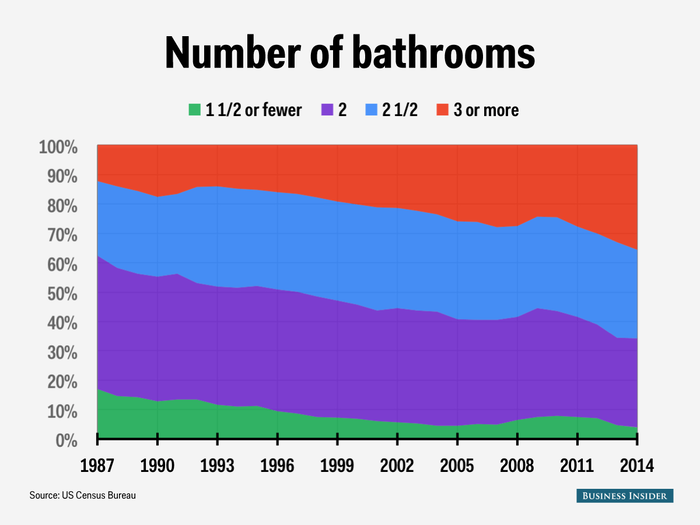
Houses are getting taller. In 1973, two-thirds of new houses had one story. Since the late 90s, a majority have had at least two floors, and split-level homes have nearly vanished.
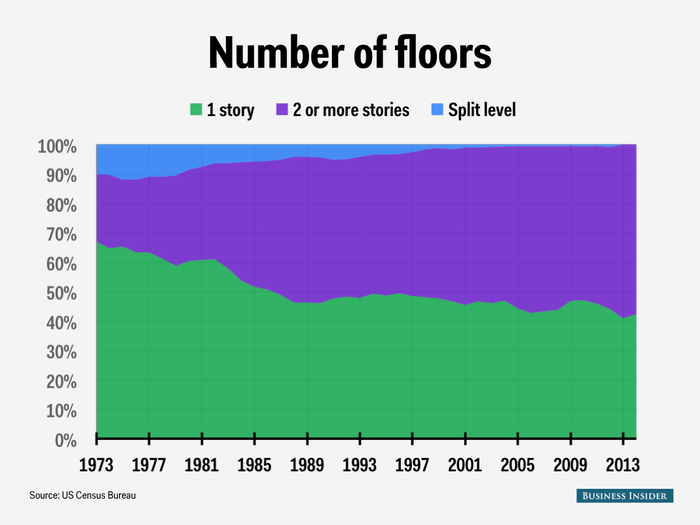
The floor area of houses has also increased. New homes in 1973 had a median area of 1,525 square feet, while in 2014, houses had grown to a median of 2,453 square feet.
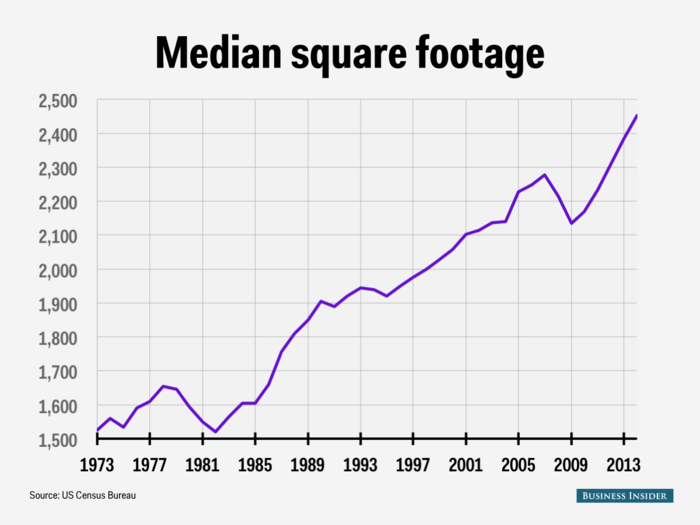
As houses have gotten larger, so have garages. In 1973, only 39% of houses had a garage big enough for two or more cars, while in 2014 85% of new houses have such garages. Carports have gone from being somewhat common to extremely rare.
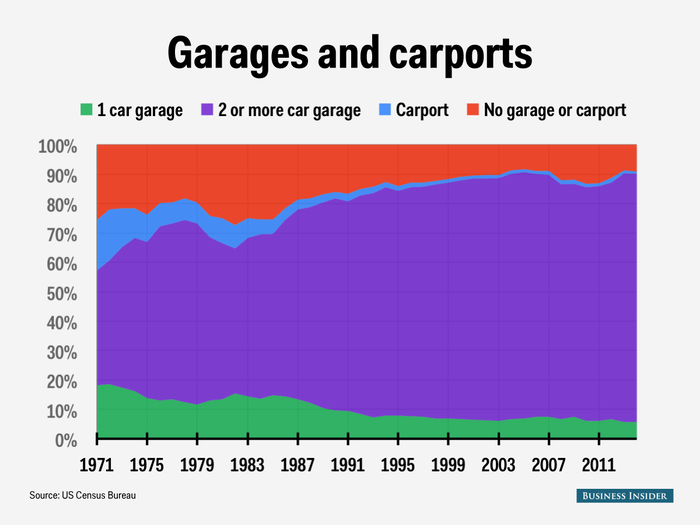
Basements and crawl spaces have both become slightly less common, with slab foundations becoming more popular.
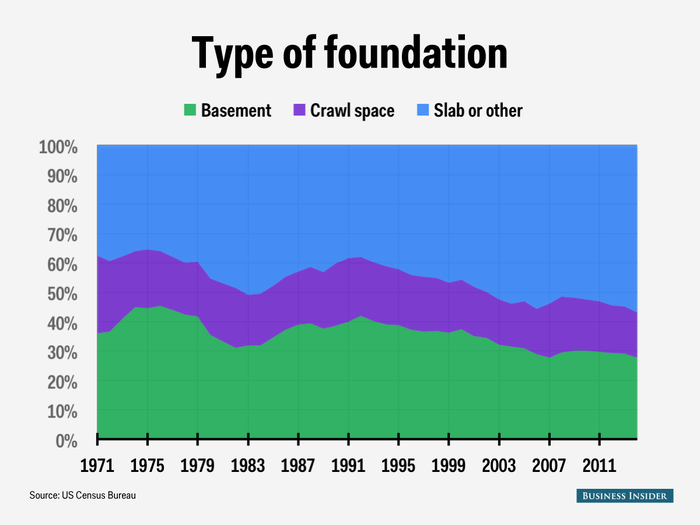
Houses are more likely to have air conditioning. About half of new homes in 1973 had air conditioning installed, a fraction that steadily rose to about nine in ten in more recent years.
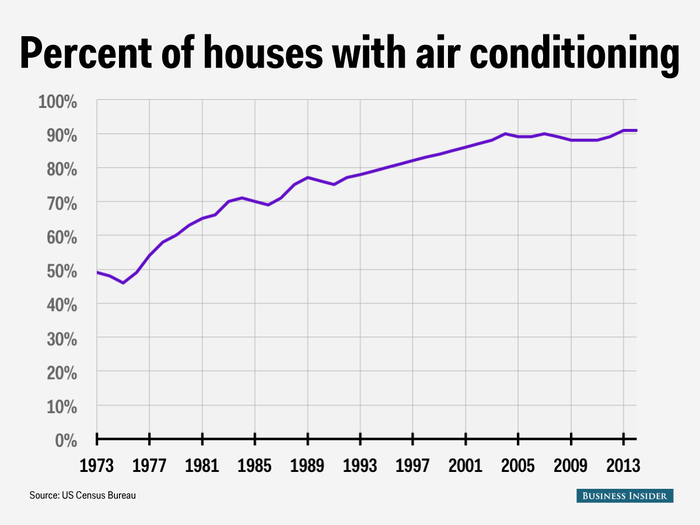
The majority of new houses have used forced-air heating systems since the 70s, but heat pumps have been on a steady rise.
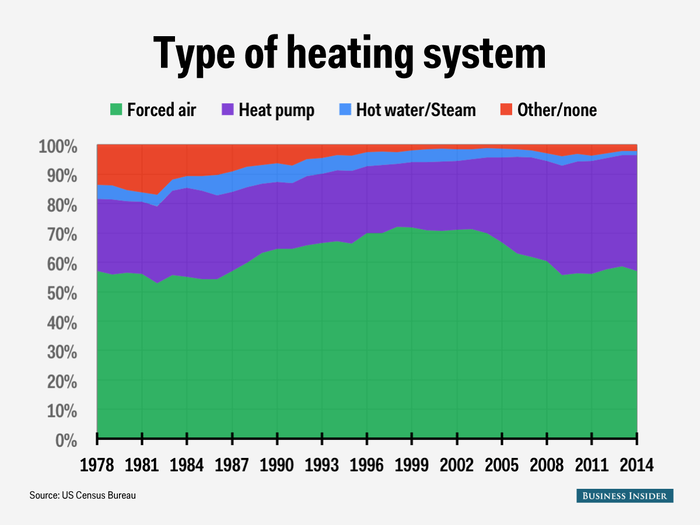
Most homes have been heated by gas or electricity. Electricity took a big part of gas' share in the late 70s and at the end of the last decade.
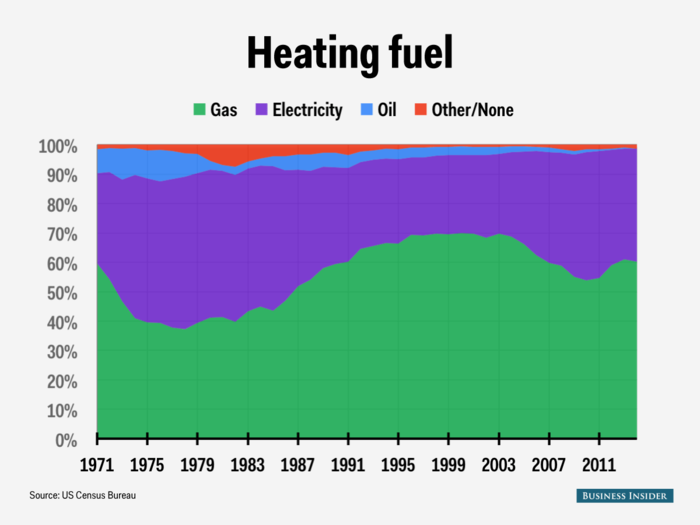
About half of new houses have at least one fireplace, although they've become slightly less common in recent years.
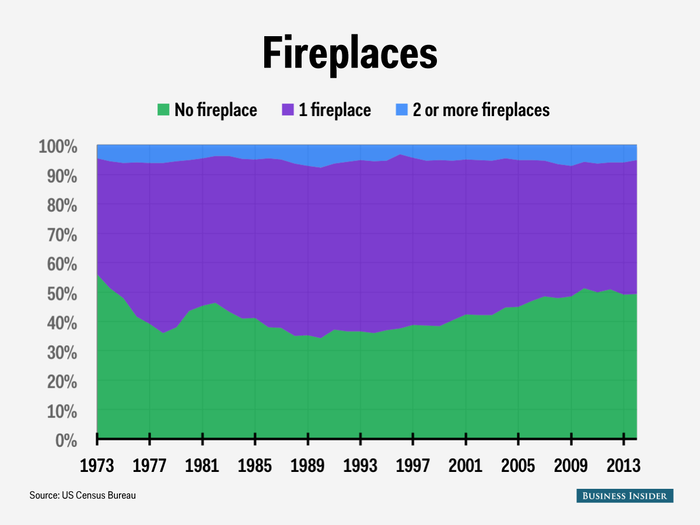
Wood houses have become far less common over the last several years as other external wall materials, mainly vinyl siding and fiber cement, have taken over.
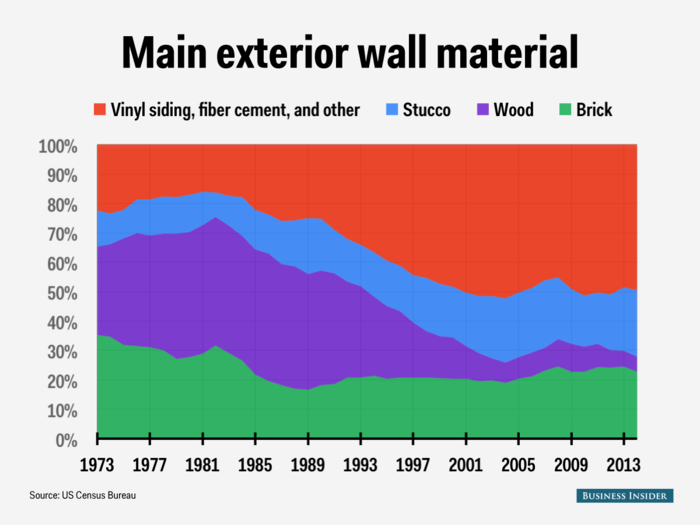
These 11 charts show how American houses have changed since the '70s

Popular Right Now
Advertisement